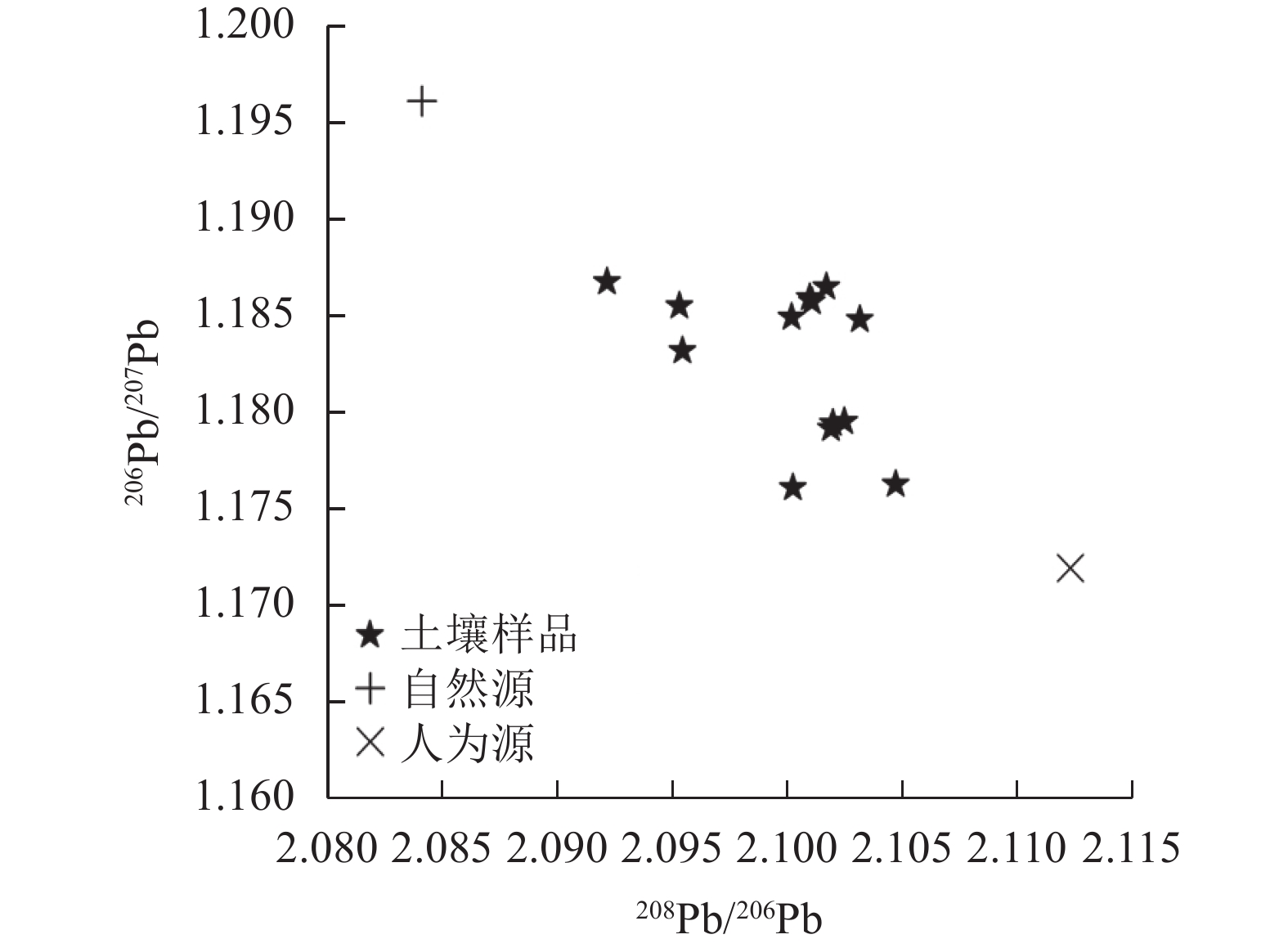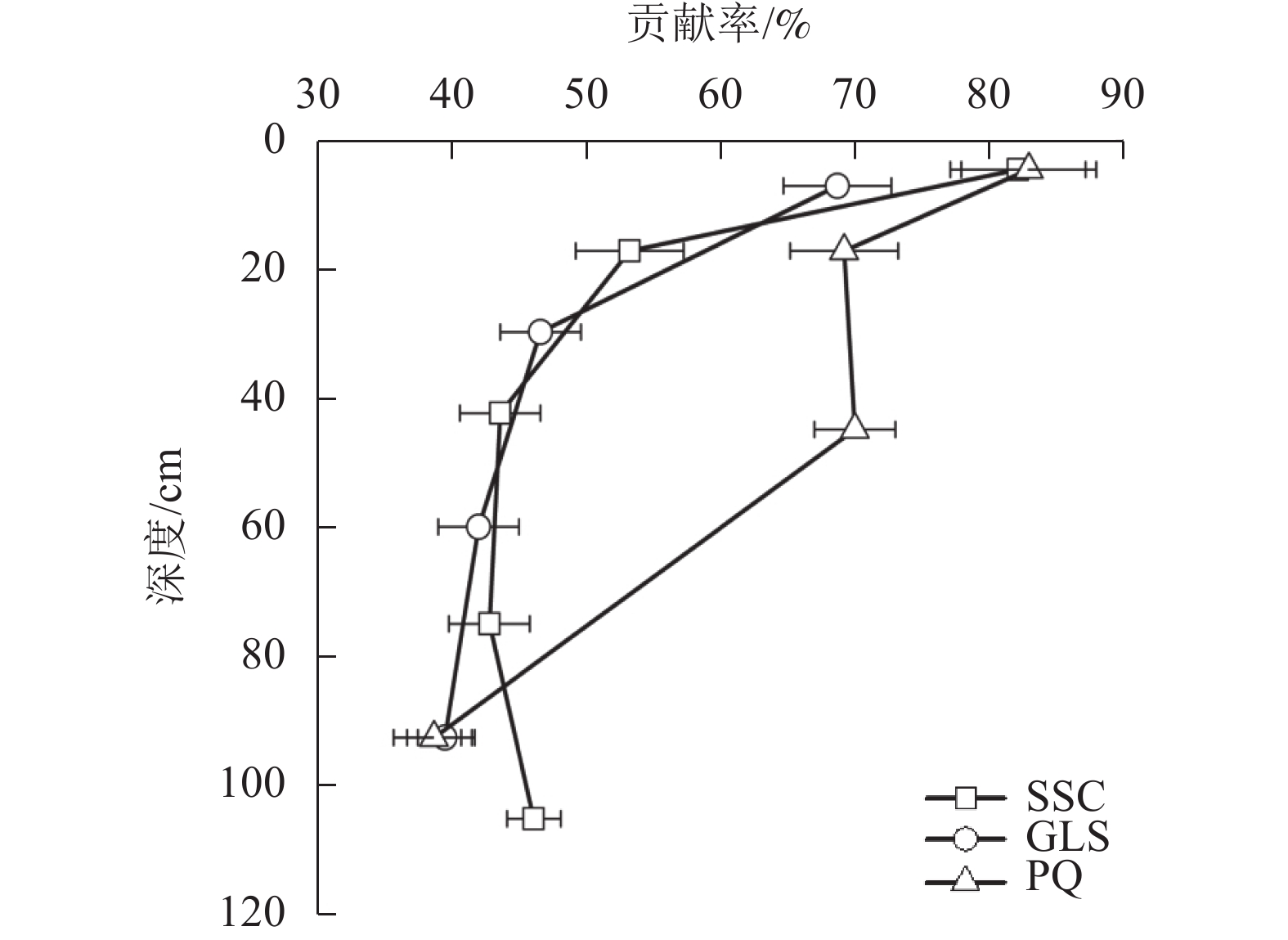-
随着国家工业化和城市化的发展,农业、工业和交通运输业等人为活动导致重金属在土壤中有较高程度的积累[1−4],导致土壤质量降低。重金属在土壤中具有毒性强、隐蔽性强、生物降解性弱等特点,是环境污染防治的重点和难点[5],同时对食品安全和人类健康构成严重威胁[6−10]。重金属经食物链在生物体内富集[11],导致慢性铅中毒,表现为神经学缺陷、肾机能障碍和贫血,环境中高含量的铅(Pb)在儿童体内积累后会影响智力发育及注意力等[12]。土壤 Pb 来源有自然来源和外源输入。自然来源主要是成土母质,外源输入相对复杂,主要包括大气降尘、汽车尾气排放、燃油燃煤、含铅矿山的开采与冶炼等工业排放[13−14]。
针对污染现状了解污染物来源是防止污染的最根本措施,土壤重金属源解析包括对污染来源的定性分析以及污染源对土壤重金属贡献的定量计算[15−16]。同位素示踪法是源解析的一种有效方法[17−19],精准度和识别能力较高[20−22]。自然界中 Pb 同位素主要由有204Pb、206Pb、207Pb和208Pb等4种。环境样品形成时间的不同导致了 Pb 稳定同位素组成的显著差异[23],因此,利用 Pb 同位素组成特征能很好地区分自然源和外源输入。曾志刚等[24−25]研究表明:在大西洋洋中脊海底表层热液沉积物中,同一热液区的 Pb 同位素组成变化不大,但不同热液区之间有着明显的变化;刘子宁等[26]对珠江三角洲第四纪沉积物 Pb 同位素组成进行分析,结果表明:第四纪沉积物基本不受人为源影响,物质来源稳定;李锋[27]对中国北方沙尘源区风成沙 Pb 同位素分布特征的研究表明:塔克拉玛干沙漠可能是中国黄土、格陵兰冰芯粉尘和北太平洋深海沉积物主要有效源区,对整个亚洲地区有着显著影响。
诸多研究已阐明Pb 在全球范围内的污染分布及危害,但对其污染来源的研究尚未完善,基于 Pb 稳定同位素源解析能够对土壤中 Pb 污染物来源及污染程度进行定性定量分析[28−31]。在中国东部地区广泛分布着新生代玄武岩发育土壤[32−33],在自然来源和外源输入共同作用下,外源输入对土壤 Pb 的贡献尚未得到明确的结论,因此,制定合理的污染防治措施具有重要的理论意义和应用价值[34]。本研究以新嵊盆地为研究对象,分析不同剖面以及环境中潜在污染源的 Pb 同位素组成特征,定量计算外源输入对土壤中 Pb 的贡献率,进行风险评价,并利用 Pb 同位素指纹特征辨识沉积物中 Pb 污染来源,以期为中国东部土壤重金属污染防治提供理论依据。
-
新嵊盆地位于中国东部浙江省绍兴市。浙江省地势自西南向东北方向倾斜,以丘陵和低山为主,属亚热带季风区,高温多雨,年平均气温为16.5 ℃,年平均降水量为1 500.0 mm。浙江省广泛分布着以玄武岩为主的火山岩,其中以绍兴市新嵊盆地玄武岩较为典型且分布面积较广。在少有土壤堆积和搬运,且远离交通干线的玄武岩集中分布区台地中央区域布设研究样点,以减少人为活动和侵蚀的影响。以新昌县上市场村(SSC剖面,29°16′27″N, 120°49′02″E),挂帘山村(GLS剖面,29°28′57″N,120°54′09″E)以及嵊州市浦桥村(PQ剖面,29°34′47″N,120°45′55″E)等3个采样点的剖面作为研究对象,所有剖面的母岩均为新鲜拉斑玄武岩,采集深度1 m以上,层次完整,土壤样品按发生层从下到上采集。
-
土壤样品在通风无阳光直射处自然风干,挑出砾石并去除枯枝落叶、根系、虫卵等非土壤成分;对土壤样品进行研磨,分别过10、60、100和200目尼龙筛;用孟塞尔比色卡进行比色。土壤的基本理化性质按照常规分析方法测定,具体实验步骤见土壤调查实验室分析方法[35]。痕量元素用Finnigan Element Ⅱ型高分辨率电感耦合等离子质谱仪(HR-ICP-MS)测定,检测限低于0.5×10−9,相对标准偏差小于5%。分析在南京大学内生金属矿床成矿机制研究国家重点实验室完成。
Pb 同位素测定主要分为分解样品、分离纯化过程和质谱测定3个步骤。①对样品带进行预处理。将样品带放入盐酸中浸洗,再用高纯水冲洗至中性,烘干,然后将样品带点焊在插件上,置于高真空设备中,在1 800 ℃除气0.5 h。称取过200目筛的土样0.25 g至聚四氟乙烯坩埚,加入20 mL浓硝酸,在电热板上加热1 h,接着加入30 mL氢氟酸与1 mL高氯酸,蒸干至样品完全溶解,再加入5 mL 硝酸,转移到250 mL容量瓶中,定容后摇匀。②用高纯水溶解已制备好的锶试样,用微量注射器分3~4次,每次2~3 μL将试样溶解液分别滴加于处理好的样品带的中心区域,蒸干并红化样品带,将插件放入质谱计。③待质谱计的真空达到要求后,打开通往分析管道的隔离阀,给蒸发带灯丝加上电流,缓慢升温,当达到1 000~2 000 ℃时,寻找208Pb的电子流,并小心调节加到蒸发带上的电流,使离子流达到足够的强度并保持稳定,质谱分析采用多接受杯同时接收,数据取多次测定的平均值。 Pb 同位素测定在中国科学技术大学壳幔物质与环境重点实验室完成。实验仪器为高分辨率热电质谱仪(TIMS)。由美国国家标准与技术研究院(NIST981)测定的207Pb/206Pb和208Pb/206Pb值分别校准为0.914 7±0.008 4和2.168 3±0.009 9。
-
迁移率是土壤中Pb的物质来源的重要指标。研究土壤元素的迁移特征不能直接用元素的绝对质量分数变化,需采用稳定元素作为参照,计算土壤样品中强活动性元素在土壤中的真实迁移或富集程度。铌(Nb)作为土壤中流动性最小的元素[36−37],将其作为计算公式中的指标元素综合估算土壤中 Pb 质量分数变化,探究不同深度 Pb 的迁移率(τPb,h)。计算公式如下:
式(1)中:CPb,h为土壤层 h 中元素Pb的质量分数,CPb,p为母岩中元素Pb的质量分数,CNb,h为土壤层 h 中元素Nb的质量分数,CNb,p为母岩中元素Nb的质量分数。
以估算人为源对土壤中 Pb 的贡献为目的,基于同位素质量平衡构建自然-人为两元模型[28]。计算公式如下:
式(2)中$ {:f}_{\mathrm{人}\mathrm{为}\mathrm{源}}^{\mathrm{P}\mathrm{b}} $为人为源对土壤中 Pb 的贡献百分比,$ {R}_{\mathrm{P}\mathrm{b}}^{\mathrm{土}\mathrm{壤}} $、${R}_{\mathrm{P}\mathrm{b}}^{\mathrm{自然}\mathrm{源}}$和$ {R}_{\mathrm{P}\mathrm{b}}^{\mathrm{人}\mathrm{为}\mathrm{源}} $分别为土壤、自然源和人为源206Pb/207Pb值,自然源和人为源的206Pb/207Pb值分别为1.196 0和1.172 0[38−39]。
采用ArcGIS、Excel、Origin等软件进行相关分析、统计分析、数据处理和作图等。
-
研究区剖面的基本理化性质见表1。土壤剖面自下而上,颜色由7.5YR5/6向7.5YR3/3过渡;土壤结构由块状逐渐变化为团粒结构;根系逐渐增加。研究区土壤样品大部分呈弱酸性,pH为5.59~6.65,且pH随剖面深度的增加而略有升高,最大值出现在PQ剖面的底土层,最低值出现在SSC剖面的表土层。土壤有机质为1.30~49.60 g·kg−1,SSC、GLS、PQ剖面的最大值分别为37.10、27.30、49.60 g·kg−1,最小值分别为4.20、1.30、6.30 g·kg−1,最大值出现在PQ剖面的表土层,最小值出现在GLS剖面的底土层,土壤有机质质量分数沿剖面自下而上呈现增加趋势。
剖面 地理位置 深度/cm 颜色 pH 有机质/(g·kg−1) 结构 根系 SSC 新昌县上市场村 0~10 7.5YR3/3 5.59 37.1 团粒状 大量 10~25 7.5YR3/4 5.79 28.5 弱块状 中量 25~60 7.5YR4/4 6.11 13.8 弱块状 少量 60~90 7.5YR4/4 6.18 4.2 块状 无 90~120 7.5YR5/6 6.33 5.8 块状 无 GLS 新昌县挂帘山村 0~15 7.5YR3/4 5.79 27.3 团粒状 大量 15~45 7.5YR4/4 6.42 4.9 弱块状 中量 45~75 7.5YR4/6 6.49 1.3 块状 少量 75~110 7.5YR5/6 6.35 5.6 块状 无 PQ 嵊州市浦桥村 0~10 7.5YR3/4 6.49 49.6 团粒状 大量 10~25 7.5YR4/4 6.28 20.2 弱块状 中量 25~65 7.5YR4/6 6.65 6.3 弱块状 少量 65~120 7.5YR5/6 6.52 9.2 块状 无 Table 1. Soil profile description and some basic physical and chemical properties
-
本研究剖面的元素 Nb 和 Pb 质量分数见表2,通过公式(1)计算 Pb 在土壤中的迁移率得到图1。当τPb,h>0时,表示 Pb 在土壤中相对于母岩的富集,当τPb,h<0时,表示 Pb 在土壤中相对于母岩的淋失。研究剖面自上而下,土壤中 Pb 的迁移率由正转负,整体呈逐渐下降的趋势,在底土层趋近于0,研究区表层土壤 Pb 质量分数的富集最高达到母岩的1.5倍以上。
剖面 深度/cm Nb/(mg·kg−1) Pb/(mg·kg−1) 208Pb/206Pb 206Pb/207Pb SSC 0~10 31.2±0.2 15.6±0.7 2.103 9±0.006 3 1.176 3±0.003 4 10~25 30.6±0.1 10.6±0.6 2.094 1±0.003 9 1.183 2±0.004 8 25~60 23.4±0.1 3.9±0.5 2.093 9±0.004 6 1.185 5±0.003 9 60~90 18.9±0.1 4.3±0.4 2.100 0±0.003 5 1.185 7±0.002 4 90~120 21.4±0.1 3.2±0.2 2.099 1±0.004 2 1.184 9±0.005 3 GLS 0~15 47.2±0.3 22.4±0.7 2.101 5±0.006 2 1.179 5±0.004 9 15~45 40.0±0.2 10.8±0.5 2.102 3±0.005 7 1.184 8±0.003 3 45~75 37.6±0.1 3.9±0.3 2.099 9±0.005 2 1.185 9±0.006 1 75~110 37.1±0.1 5.0±0.2 2.100 7±0.004 8 1.186 5±0.003 2 PQ 0~10 42.3±0.2 17.3±0.6 2.099 1±0.005 4 1.176 1±0.004 6 10~25 40.2±0.1 7.3±0.5 2.101 0±0.005 8 1.179 4±0.003 6 25~65 38.9±0.1 6.3±0.2 2.100 9±0.004 1 1.179 2±0.005 2 65~120 36.6±0.1 9.9±0.1 2.090 6±0.002 9 1.186 7±0.004 5 母岩(本研究) − 20.0±0.1 3.9±0.1 2.082 0±0.003 1 1.196 0±0.001 5 人为源 − − − 2.112 0±0.048 4 1.172 0±0.031 0 说明:−表示无此项。人为源数据来源于文献[38, 40−42]。 Table 2. Isotopic ratios of soil samples to anthropogenic sources and trace element contents of samples
-
研究区土壤样品的206Pb/207Pb和208Pb/206Pb值见表2,206Pb/207Pb的变化范围为1.176 1~1.186 7。本研究母岩206Pb/207Pb均值为1.196 0。人为源206Pb/207Pb值为1.172 0。研究剖面自下而上206Pb/207Pb值均呈递减的趋势,表土层的低206Pb/207Pb值更接近人为源均值,随着剖面深度的不断增加,底土层更靠近自然背景。研究区土壤样品的208Pb/206Pb为2.090 6~2.103 9,且样品的208Pb/206Pb值变化范围在自然源和人为源这2个端元值之间(图2)。
-
剖面土壤的pH随着土层深度增加呈现增大再降低的趋势,表层pH较低。当表层土 Pb 质量分数较高时,有机质质量分数也相对较高,有机质结合态重金属是常见的重金属形态,—SH、—NH2等基团形态能够与土壤中的 Pb 形成相对稳定的络合物,降低 Pb 在土壤中的迁移能力[43]。Pb 质量分数随着剖面深度的递增总体呈逐渐减小趋势,说明外源输入对土壤表层 Pb 富集的影响。ZHAO等[44]和FANG等[45]采用斯皮尔曼相关分析法对土壤中的重金属与理化性质进行相关性分析,结果表明:土壤pH与 Pb 质量分数呈负相关,土壤有机质与 Pb 质量分数呈正相关。本研究中土壤剖面pH变化主要是由于表层土壤样品的重金属离子较多,可与阴离子发生反应,使得土壤中的氢离子游离,土壤呈酸性,因此 Pb 在土壤表层的迁移率较大。随着剖面深度的增加,pH呈现增大趋势是由于土壤中存在的大量非金属离子可以与氢离子发生反应。随着pH变化趋于稳定,Pb 在土壤中的迁移能力逐渐下降。有机质对重金属既有吸附作用,同时也可能活化重金属。当活化作用超出吸附钝化能力时,重金属可利用性会随有机质质量分数的升高而提高,因此,也会出现GLS、PQ剖面的底土层中有机质质量分数明显高于上一层的情况。可见,除外源输入外,母岩发育也会向土壤输入一定的有机质。
-
研究区土壤样品Pb同位素组成特征变化范围在自然源和人为源有效源区之间(图2),表明其受到自然源和人为源 Pb 输入的共同影响。李峰[27]研究表明:受西北季风影响,研究区的干降尘主要来自于北方黄土,而中国北方黄土与塔克拉玛干沙漠同属于一个有效源区。有理由认为:研究区大气降尘的206Pb/207Pb与塔克拉玛干沙漠 Pb 同位素特征相似,塔克拉玛干沙漠的206Pb/207Pb为1.187 1~1.204 6,均值为1.196 0,与研究区母岩206Pb/207Pb十分接近。土壤样品206Pb/207Pb值在近地表层更靠近人为源的端元值,说明人为活动对近地表 Pb 的输入。随着剖面深度的不断增加,206Pb/207Pb更接近自然背景值,说明土壤在底土层沿袭母岩发育的特征。
前人研究表明:塔克拉玛干沙漠 Pb 同位素特征与研究区的粉尘物质极为相似,且塔克拉玛干沙漠206Pb/207Pb均值与研究区测得的母岩206Pb/207Pb均值一致,因此将大气降尘与母岩作为自然源。人为源主要包括燃油燃煤、含铅矿山的开采、冶炼企业排放的“三废”(废水、废气和固体废弃物)、尾砂以及汽车排放尾气[37],其中尾砂206Pb/207Pb为1.165 2~1.166 1,208Pb/206Pb为2.104 0~2.105 0[43]。由于研究区远离砂厂等工业区域,因此尾砂不是主要人为来源。汽车尾气的206Pb/207Pb为1.150 3~1.162 1,208Pb/206Pb为2.105 9~2.114 8[44−45]。HUANG等[46]在对市郊农田土壤的污染源解析过程中发现:道路扬尘、固体废弃物、有机肥料的 206Pb/207Pb、208Pb/206Pb存在严重的信号重叠,SHETAYA等[47]研究表明:尽管 Pb 同位素被广泛应用于污染源解析,但不同潜在污染源的信号重叠是一个经常遇到的问题,仅通过 Pb 同位素分析无法将2种污染源区分。秦莹等[48]对沈哈高速公路两侧农田土壤重金属的调查研究表明:土壤 Pb 有效态质量分数总体上均呈随距离增加而降低的趋势。由于研究区位于远离交通干线的乡村区域,交通源的影响很小,并且自21世纪以来,中国全面实行汽油无铅化,因此同样排除了汽车尾气作为研究区的主要人为源。
中国煤炭的使用历史已有几千年,大型煤矿主要分布在山西太原、山东枣庄以及江苏徐州等地。有研究表明:2001—2005年,中国燃煤造成的大气 Pb 排放量累积超过1 900 t,年增长率为14.5%[49]。在北方的冬季,来自高纬度地区的冷空气受大陆高压系统控制向南传播,形成世界上最强的北方干冷冬季季风。这些地区的 Pb 排放物随西北季风沉积在研究区,因此燃煤是研究区 Pb 污染的主要来源。中国煤炭的206Pb/207Pb为1.141 0~1.177 0,208Pb/206Pb为2.068 8~2.160 4[50],其中距研究区最近的长兴煤矿是浙江省最大的煤矿,该地土壤样品的206Pb/207Pb为1.164 0~1.274 0,均值为1.172 0,208Pb/206Pb为1.936 0~2.114 0[38−39],均值为2.112 0。在自然源和人为源的双端元影响下,研究区的土壤样品的206Pb/207Pb为1.176 3~1.186 7和2.090 6~2.103 9(图2)。SSC、GLS和PQ这3个剖面母岩的206Pb/207Pb均值为1.196 0,208Pb/206Pb为2.082 0。同时,土壤样品中低206Pb/207Pb表明了燃煤对研究区域 Pb 的输入[51]。
综上所述,对 Pb 同位素组成特征进行定性分析后,确定燃煤是研究区的主要人为源。
-
本研究地点位于远离城市的乡村地区,相对于汽车尾气、含铅矿石的开采以及尾矿对土壤中 Pb 的输入,煤炭是Pb 输入主要的人为源。确定燃煤为主要人为来源后,根据人为源的206Pb/207Pb为1.172 0,利用公式(2)计算3个剖面的人为源贡献率(图3)。由图3可知:SSC剖面的人为源贡献率为42.9%~82.1%,GLS剖面的人为源贡献率为39.6%~68.8%,PQ剖面的人为源贡献率在38.8%~82.9%。剖面自下而上,人为源对土壤中 Pb 的贡献率逐渐增大,且3个剖面的最大值均为表层土,说明各种来源的 Pb 在表层土中富集达到峰值,随着剖面深度的不断增加,人为源贡献率逐渐降低。
-
新嵊盆地表层土 Pb 质量分数异常增高,且迁移率最高,达到母岩背景值的1.5倍。3个土壤剖面均呈现出近表层 Pb的明显富集,到中间层出现Pb的淋失,在最底层 Pb 质量分数与母岩接近的基本特性。206Pb/207Pb值的变化范围越大指示外源输入对土壤 Pb 质量分数影响越显著, Pb 质量分数较高的样品,其对应的206Pb/207Pb值相对较低,因此,燃煤是研究区 Pb 污染的主要来源。研究区域人为源 Pb 对土壤的贡献率最高达到82.9%,表明新嵊盆地土壤中有大量人为 Pb 的输入。
Estimation of Pb provenance contribution in basalt-developed soils in Xinsheng Basin based on Pb isotope
doi: 10.11833/j.issn.2095-0756.20220552
- Received Date: 2022-08-30
- Accepted Date: 2023-04-13
- Rev Recd Date: 2023-04-06
- Available Online: 2023-09-26
- Publish Date: 2023-09-26
-
Key words:
- lead /
- isotope /
- anthropogenic source /
- Xinsheng Basin
Abstract:
| Citation: | SONG Yuhang, ZHI Yuyou, LI Jianwu. Estimation of Pb provenance contribution in basalt-developed soils in Xinsheng Basin based on Pb isotope[J]. Journal of Zhejiang A&F University, 2023, 40(5): 1026-1034. DOI: 10.11833/j.issn.2095-0756.20220552 |




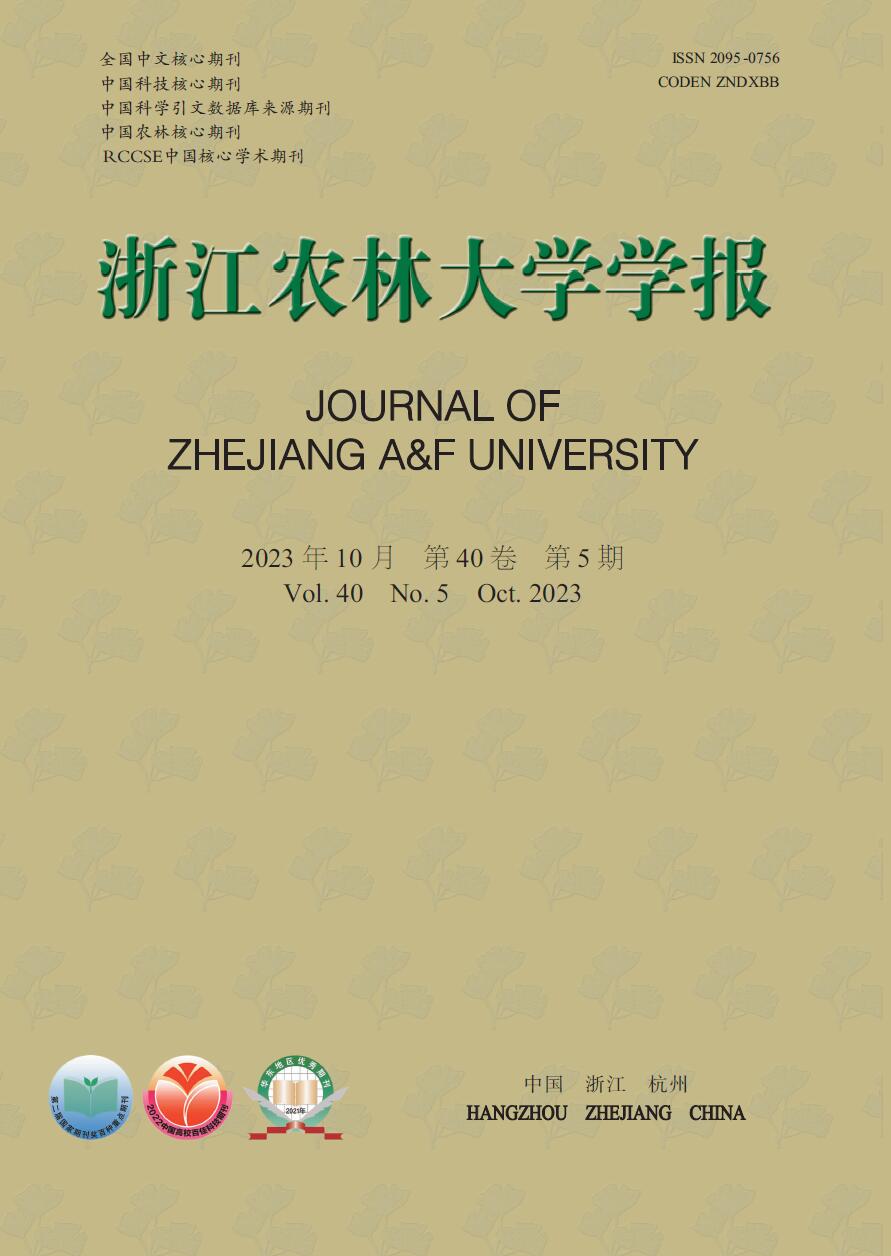


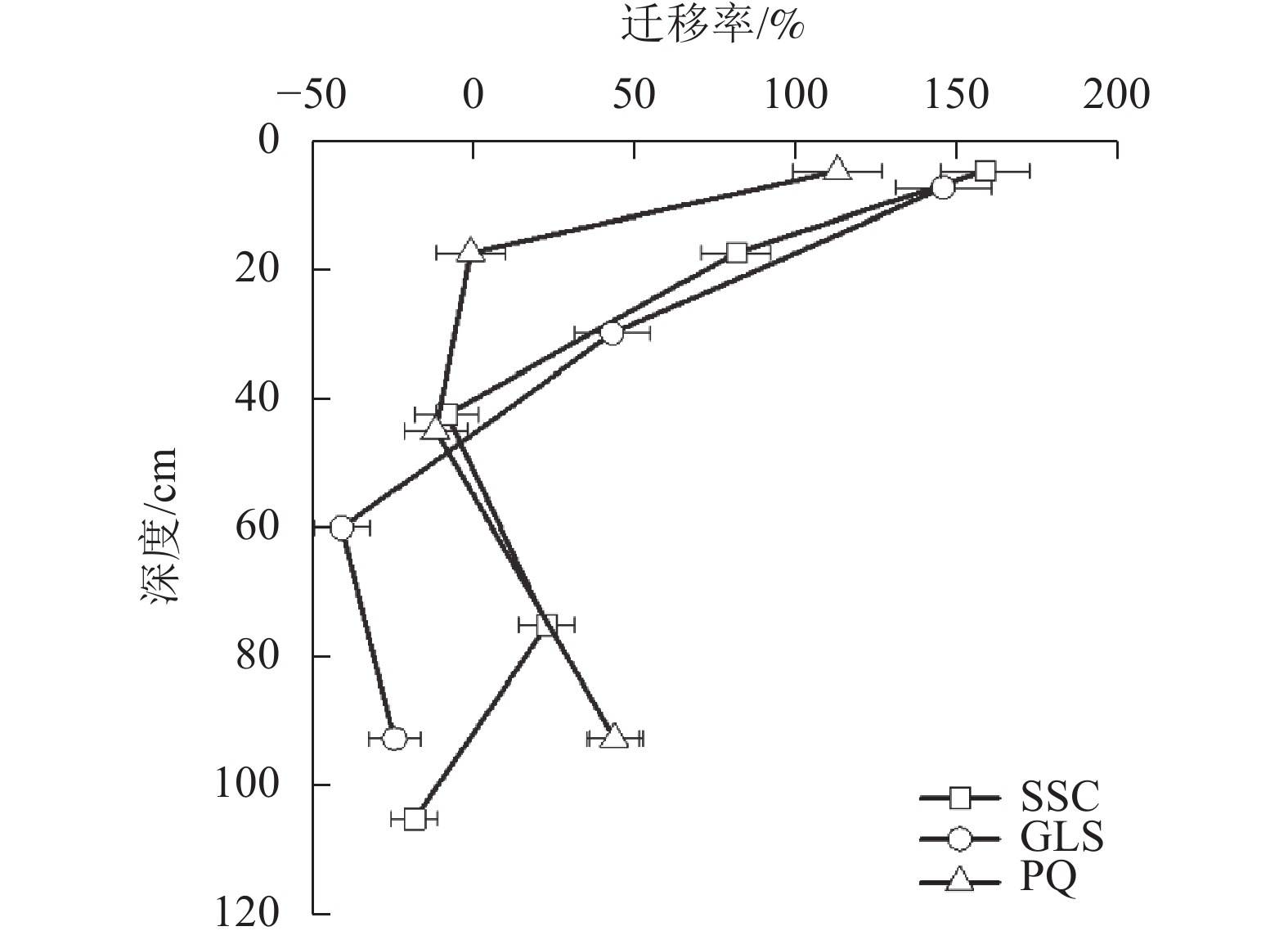


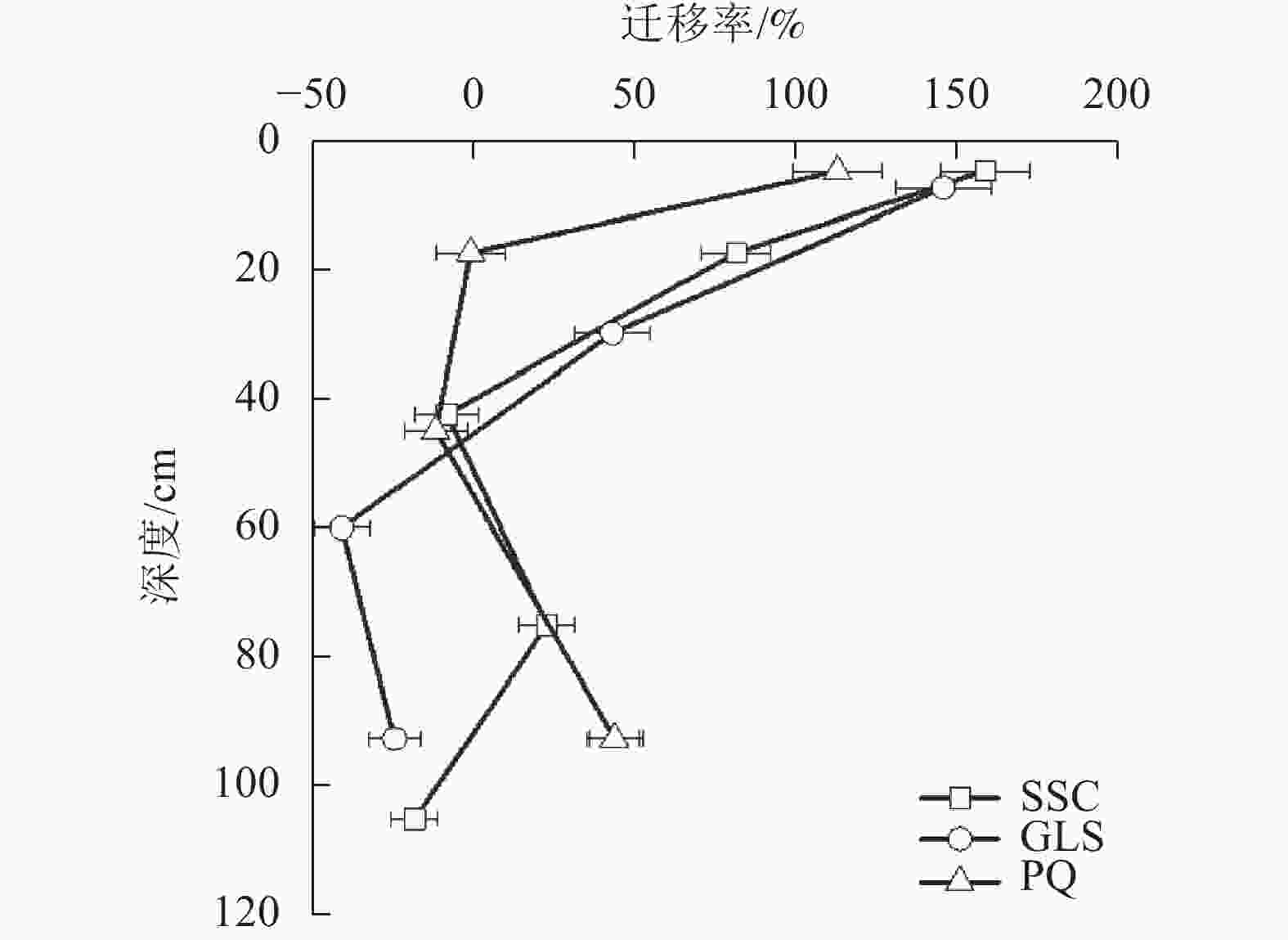
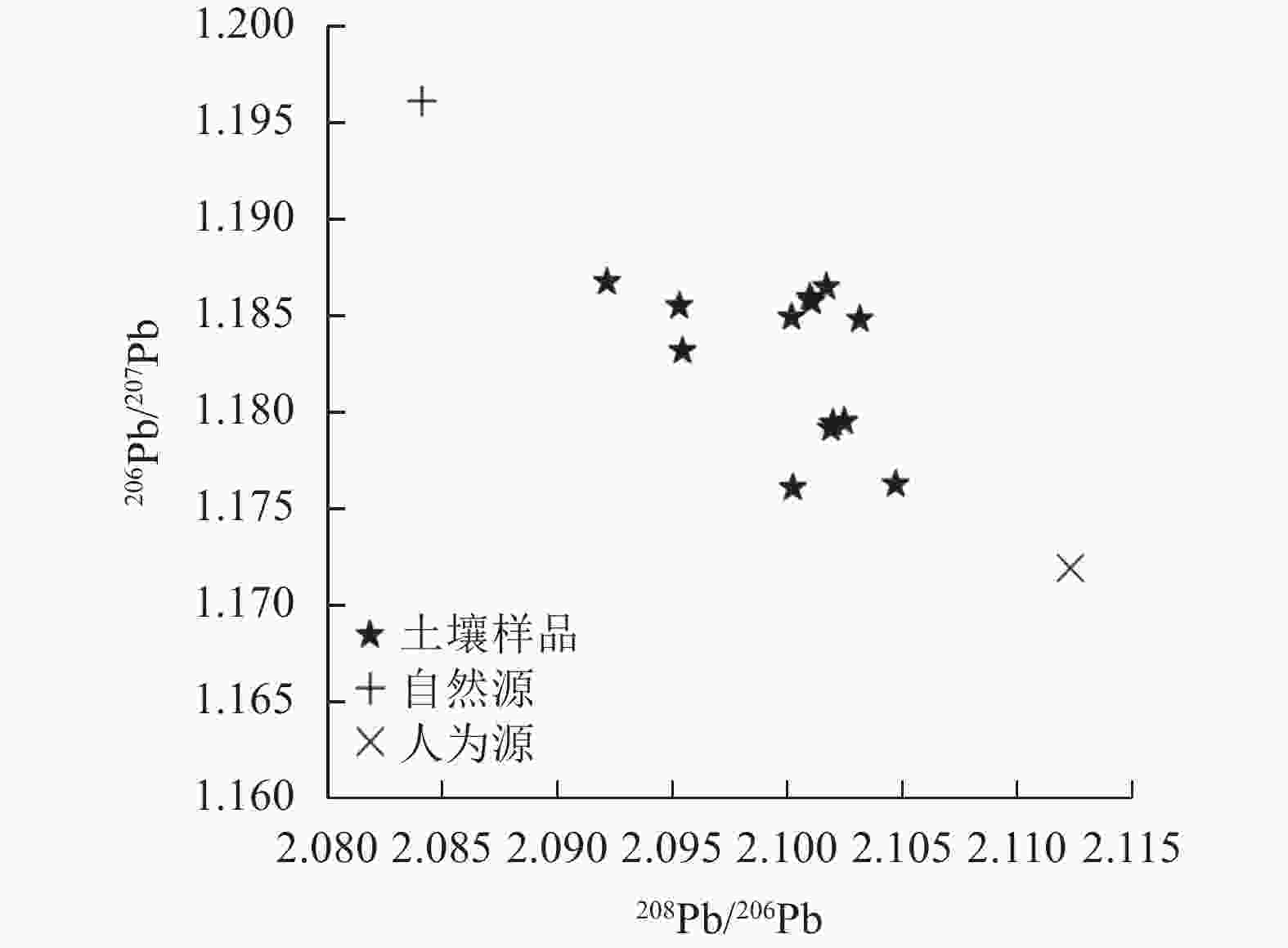

 DownLoad:
DownLoad:
